Concrete Types
Suppliers of premium concrete materialsAs the concrete experts, we understand that there are many different factors which will influence the concrete products that you choose. Laying concrete is a job which is achievable for the home handy man, as well as for qualified tradespeople. However, it is important to have some knowledge of the strength, aggregate, wetness and size of concrete which is appropriate for the job at hand. |
|
Our team will advise you on our impressive concrete products.
Concrete strength ranges from 15mpa through to 100mpa. This is clearly a huge range and so it is very important that you are confident of the strength of concrete that you require for the task. The following guidelines are the industry standards:
- 20mpa & 25mpa is most commonly used for House slabs, Foundations, Driveways and Footpaths.
- 32mpa & 40mpa is most commonly used for Suspended Slabs, Car Parks or high volume vehicle traffic areas.
- 50mpa and above has been designed and requested by engineers for high rise buildings and other special applications.
You can also choose the aggregate, or the size of the grain, which is available from 7mm to 20mm in premixed concrete. As well as functional considerations, concrete decisions should also consider how the end product will look. While concrete is naturally grey, there are a number of ways that you can alter the shade and colour. Colour oxide added to the mix will achieve this.
Order the perfect concrete products for your job.
Slump is a term used to measure the wetness of concrete, and it is important that you order the correct slump for your intended purpose; otherwise there are risks of uneven pouring, premature cracking and excessive drying times. The most standard slump for concrete is 80, which is how you would expect concrete to be delivered if no special slump is specified. With Concrete Sales, the slump can be ordered between anywhere 20 and 180, with 20 being extremely dry and 180 being extremely wet. Our professional team is able to offer estimates of the slump that would best suit your job over the phone, however in professional situations the recommended slump, along with strength and aggregate size should all be specified in the building or engineer plans.
Despite its reputation as being a somewhat drab building material, building professionals appreciate that concrete is actually a very dynamic and advantageous product. There plenty of subtle and not so subtle differences between different types of concrete and making the wrong decision could spell disaster for your building project.
The best premix concrete supplier in Melbourne, South Australia, New South Wales and Queensland.
Don't just take our word for it. Let Concrete Sales help you!
- 20mpa & 25mpa is most commonly used for House slabs, Foundations, Driveways and Footpaths.
- 32mpa & 40mpa is most commonly used for Suspended Slabs, Car Parks or high volume vehicle traffic areas.
- 50mpa and above has been designed and requested by engineers for high rise buildings and other special applications.
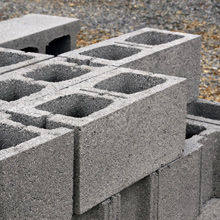 | Blockfill / Cavity FillBlockfill / Cavity fill is used for filling up block work or double skin brickwork with concrete for either retaining walls or for when the engineer has designed that the wall needs extra strength. These mixes can vary in strength from 20mpa to 40mpa which use a 7mm aggregate and can be ordered from 120 to 360 slump. The Concrete has a higher slump (wetter than normal) which is required to fill the voids and leave no air pockets or sections with concrete which will weaken the wall. These mixes are generally pumped in via a concrete pump using a 2″ delivery line to make the filing of the walls as easy and mess free as possible. |
| | |
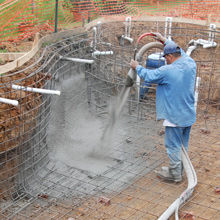 | Spray MixesSpray Mixes are used for shotcreting where concrete is pumped using a concrete pump where a compressed airline is connected to the delivery hose and actually throws the concrete from the hose. These mixes are generally used for swimming pools, retaining walls and embankments. Spray mixes are generally 20 mpa to 50mpa and have a design slump of 60, Silica fume is used to help the concrete stand up vertically. |
| | |
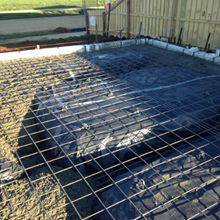 | SlabsSlabs in the ground are the most common and has two variants: conventional slabs with deep excavated beams dug into the natural ground and waffle pod slabs, which sit on top of the ground and have a grid of expanded polystyrene foam pods as void formers creating a maze of beams in between. The concrete strength will vary depending on soil test results and what the engineer has specified, 20Mpa and 25Mpa are the most commonly used concrete strength. |
| | |
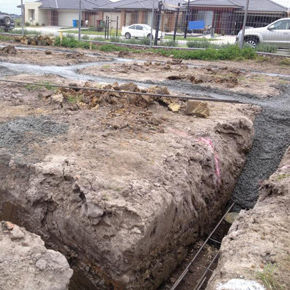 | FoundationFoundations and footings as they are also know by are typically made of 20Mpa or 25Mpa concrete with rebar reinforcement that has been poured into an excavated trench. The depth and width of the trench will be determined by an engineer. Foundations are commonly used on sloping blocks where bricks are laid directly onto the concrete and the house will generally have stumps to support the flooring. |
| | |
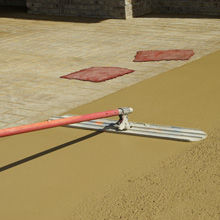 | Paving / Coloured ConcreteColoured Premixed concrete is a effective way of bringing the concrete to life. Colour can be added to any strength of concrete in many different colours ranging from the traditional charcoal to colours that glow in the dark. The possibilities are endless….. Colour guides are available online from both Boral and Hanson. These colour guides are only an indication only as they can appear to be a different colour on a computer screen or printout. |
| | |
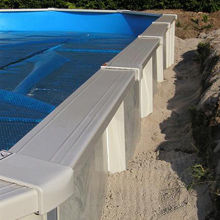 | Stabilised SandStabilised sand is used on applications where a compacted or hardened fill is required. Most common practice is backfilling trenches over the top of pipes but is also used for backfilling around fiberglass swimming pools. Stabilised sand comes in 3% to 30% cement content. |
| | |
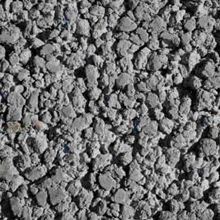 | No Fines ConcreteNo fines concrete is used when strength is required and water must be able to penetrate the surface. Common use of no fines concrete is behind retaining walls, around trees and on driveways where too much of the site is covered not allowing for water to penetrate into the soil. It achieves excellent water drainage. |
